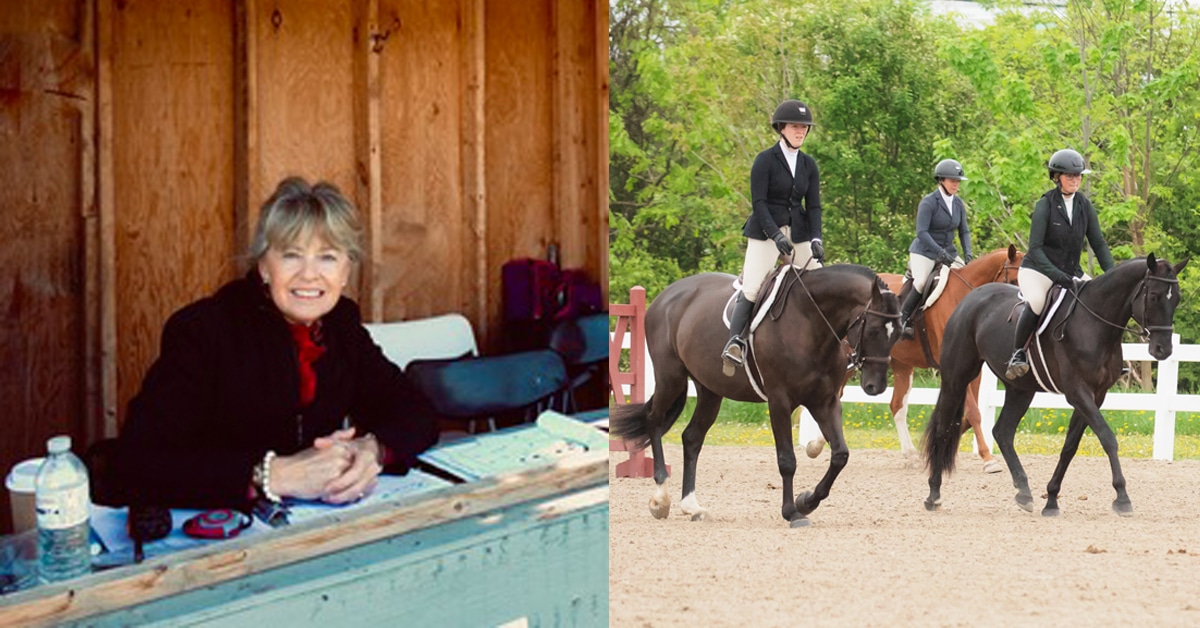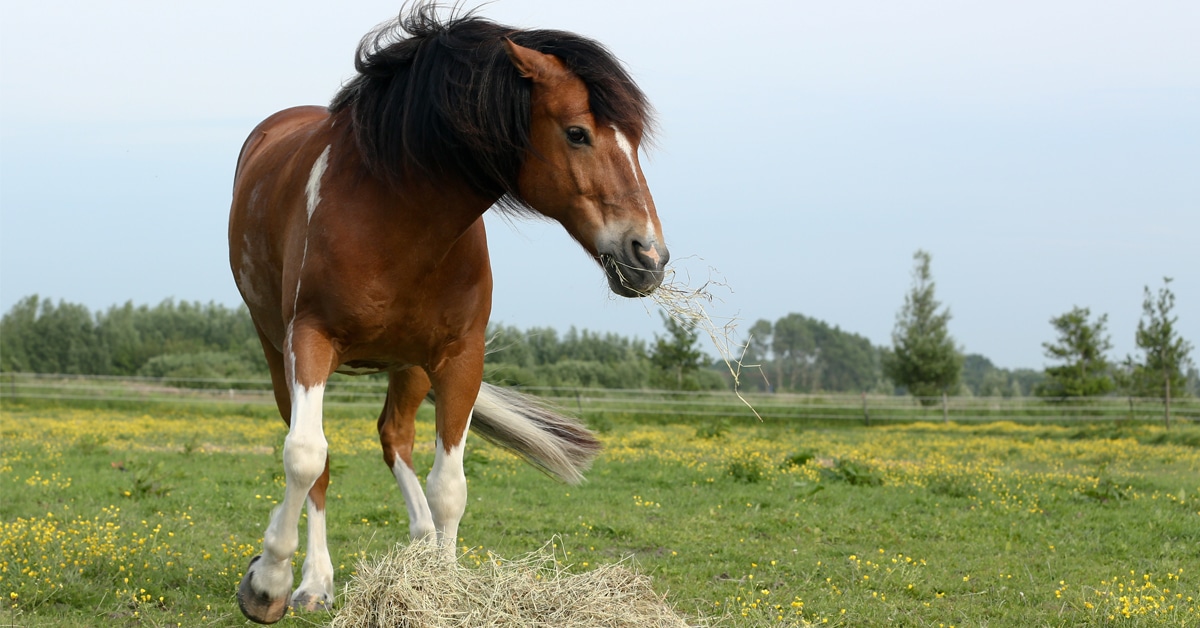She’s not sure how old he was when she got him, but Judith Corbin had owned Charliehorse for about five years when his winter coat came in thicker than usual and curly rather than straight. “When spring came, he didn’t shed the way he usually did,” she recalls. He seemed to be not feeling well, and Corbin says, “I wondered if he could have gotten into some toxic weed or something, but all the other horses ate, drank and lived just as he did.” When the farrier came by to trim Charliehorse’s feet, he mentioned to Corbin that the heavy curly coat could be a sign of Cushing’s syndrome, otherwise known as Pituitary Pars Intermedia Dysfunction (PPID). Corbin’s vet examined the horse and agreed that it was probably Cushing’s. Since Charliehorse didn’t seem to be in any distress and was an older horse, they decided not to treat him, but instead monitor his health and, as Corbin says, “Let him live out his life with those who loved him.”
Causes and symptoms of cushing’s syndrome
Cushing’s syndrome, or PPID, is caused by an enlargement (hyperplasia) of a portion of the pituitary gland (pars intermedia). The pituitary gland is located at the base of the horse’s brain and releases various hormones. The excess hormones coming from this part of the pituitary gland can also cause the adrenal glands to overproduce cortisol, another hormone which causes many health problems when the amounts are too high. Cushing’s syndrome is usually seen in older horses; the average age of diagnosis is around 20 years, with over 85 per cent of the horses being greater than 15 years of age. However, it has been diagnosed in horses as young as seven years old.
Dr. Luis Arroyo, assistant professor in the Department of Clinical Studies at the Ontario Veterinary College, says that Cushing’s syndrome can often be diagnosed by reviewing the horse’s clinical history. Common signs include:
– A long, wavy coat that doesn’t shed in warm weather – Lethargy – Bulging eyes – Excessive drinking and urinating – A history of chronic laminitis – Weight loss despite eating well – Recurring infections (such as sole abscesses, sinusitis, tooth root infections) – Increased likelihood of developing a high parasite burden
As the disease progresses, the horse may have muscle wasting along the back and often a “pot belly” as well. Some horses with Cushing’s disease tend to sweat more than normal horses. They may also develop insulin resistance, which means that glucose (sugar) is not absorbed from the bloodstream into the cells of the body as it is normally. “High glucose levels in the blood would suggest that the horse may have Cushing’s,” says Arroyo. Another test involves doing a blood test for cortisol, giving the horse a drug (dexamethasone) that tends to inhibit the production of cortisol, and re-testing the cortisol levels several hours later. “What you expect to see in a normal, healthy horse is a marked drop in the cortisol level,” Arroyo explains. “If you don’t see the drop, it is most likely because the horse has Cushing’s.”
As the pituitary gland continues to grow, it puts pressure on other parts of the brain and additional neurological signs can develop; however, this is not common. Corbin says that over time Charliehorse began to have some difficulties eating, and tended to stumble as he walked. “He seemed to spend more and more time resting under his favourite tree.”
Treatment options
To keep stress to a minimum, Corbin kept Charliehorse in a pasture by himself, but next to his buddies. She made sure he had unlimited fresh water and she adjusted his feed over time, as he had more difficulty eating hay.
Treatment seldom achieves complete resolution or remission of the disease, says Arroyo, and decisions about treating a horse with Cushing’s syndrome will depend on the horse’s age and the symptoms he is displaying. When the horse is in the earlier stages of the disease, medications are more likely to be effective in resolving the clinical signs. A commonly used drug is pergolide mesylate (a medication which is also used in humans to treat Parkinson’s disease). This is given in pill form (crushing the tablet with a little molasses may make it more palatable to the horse) and usually works well in reducing symptoms. It is reported that compounded forms of this drug vary in their efficacy. Another medication used for this condition is cyproheptadine; however, it is only marginally effective at controlling clinical signs and therefore is not used as frequently.
OVC professor Henry Staempfli adds, “Good care is probably just as important for these horses as medical treatment.” Because the high levels of cortisol in the horse’s system caused by Cushing’s disease tend to affect the immune system, owners should minimize stress to the horse and treat any infections promptly and aggressively. Regular grooming (including clipping or trimming of the long hair coat in warm weather), hoof care, de-worming, and having the horse’s teeth checked twice a year can help keep him in good health. While horses generally feel calmer when kept outdoors with other horses, avoid having a horse with Cushing’s syndrome share a field with more aggressive animals, or kept where pasturemates are frequently changing (since new horses may bring in infectious diseases or parasites). The horse’s feed should be low in soluble carbohydrates and high in protein, adds Staempfli. “Having hay available 24 hours a day is recommended, along with a senior pelleted ration.”
Hope for a cure
Veterinary researchers are continuing to look for a cure for this condition, and Arroyo says some Canadian researchers are studying the feasibility of surgery to remove the overactive pituitary gland. While still experimental in horses, this is another potential approach; surgery is already widely used to help humans who have a similar overgrowth of the pituitary gland. Staempfli adds that a drug approved for dogs with a similar condition is also being investigated for use in horses.
For Charliehorse, though, the slowly-progressing disease finally caught up with him. “He spent more time sleeping, less time eating, and the weight melted off him. He was never in apparent pain, but I knew it was time,” Corbin says. Charliehorse was buried near his favourite resting spot.
*Cushing’s disease is named after Harvey Cushing, an American brain surgeon, who first defined the illness.
The Latest










